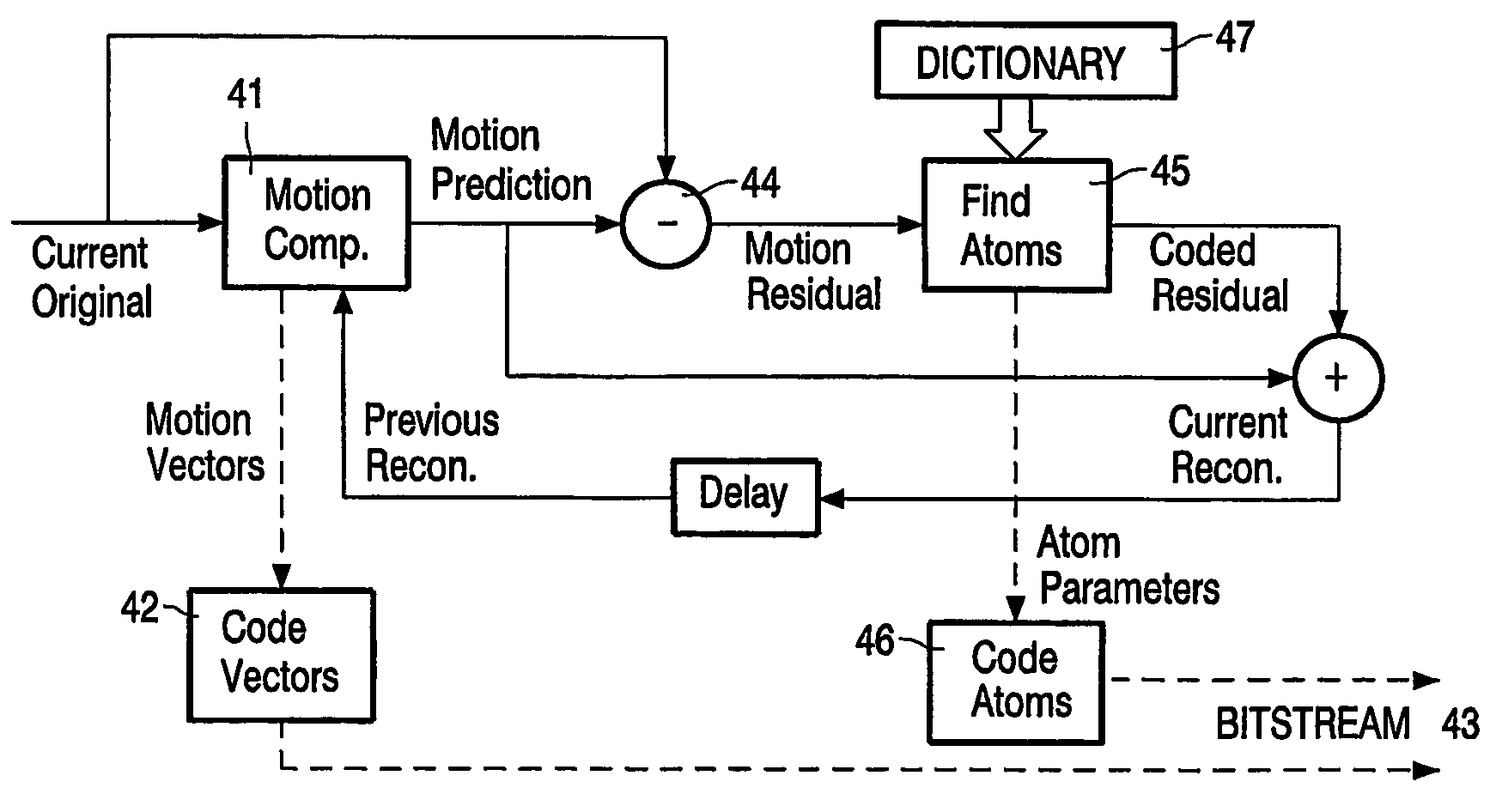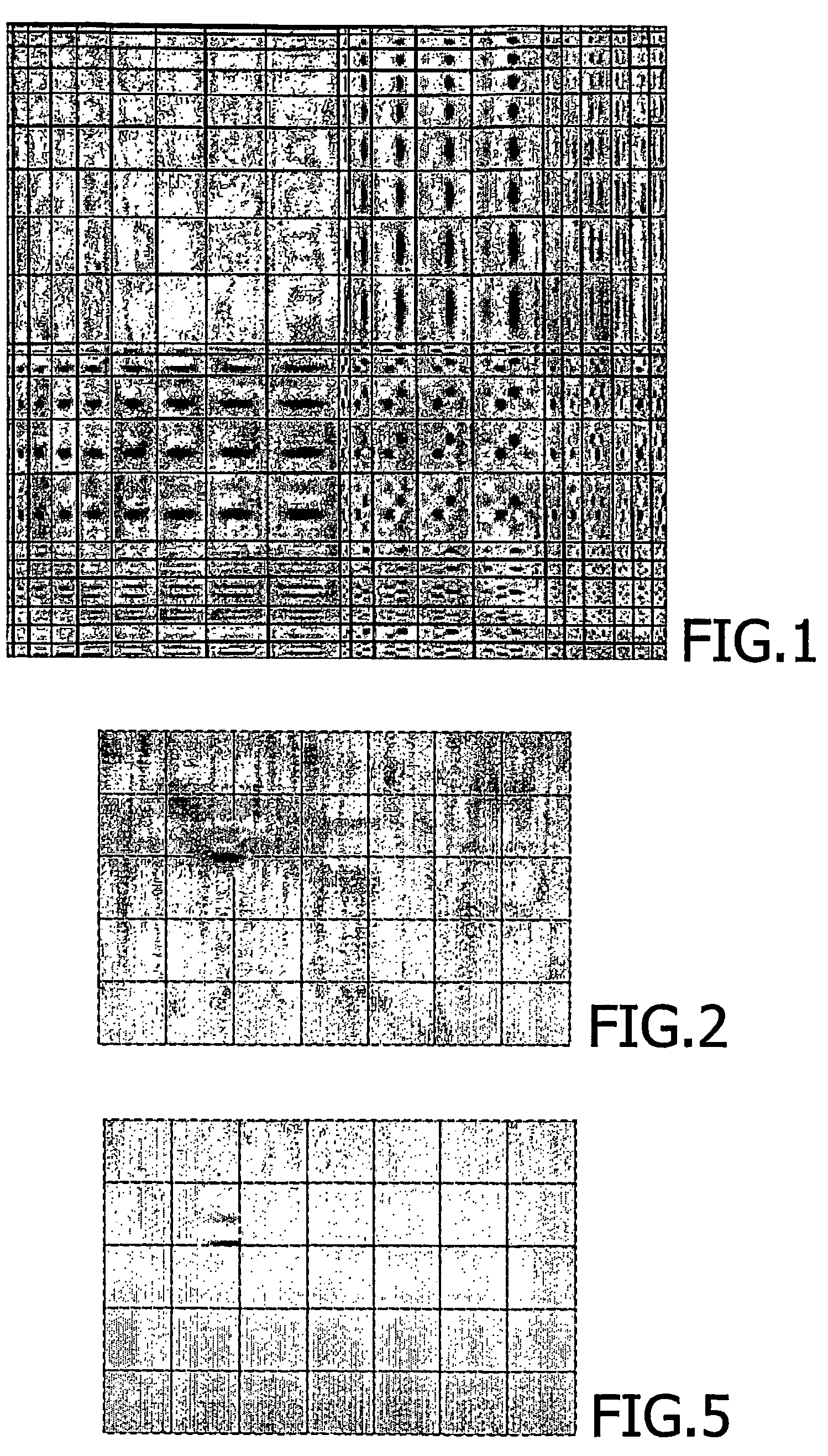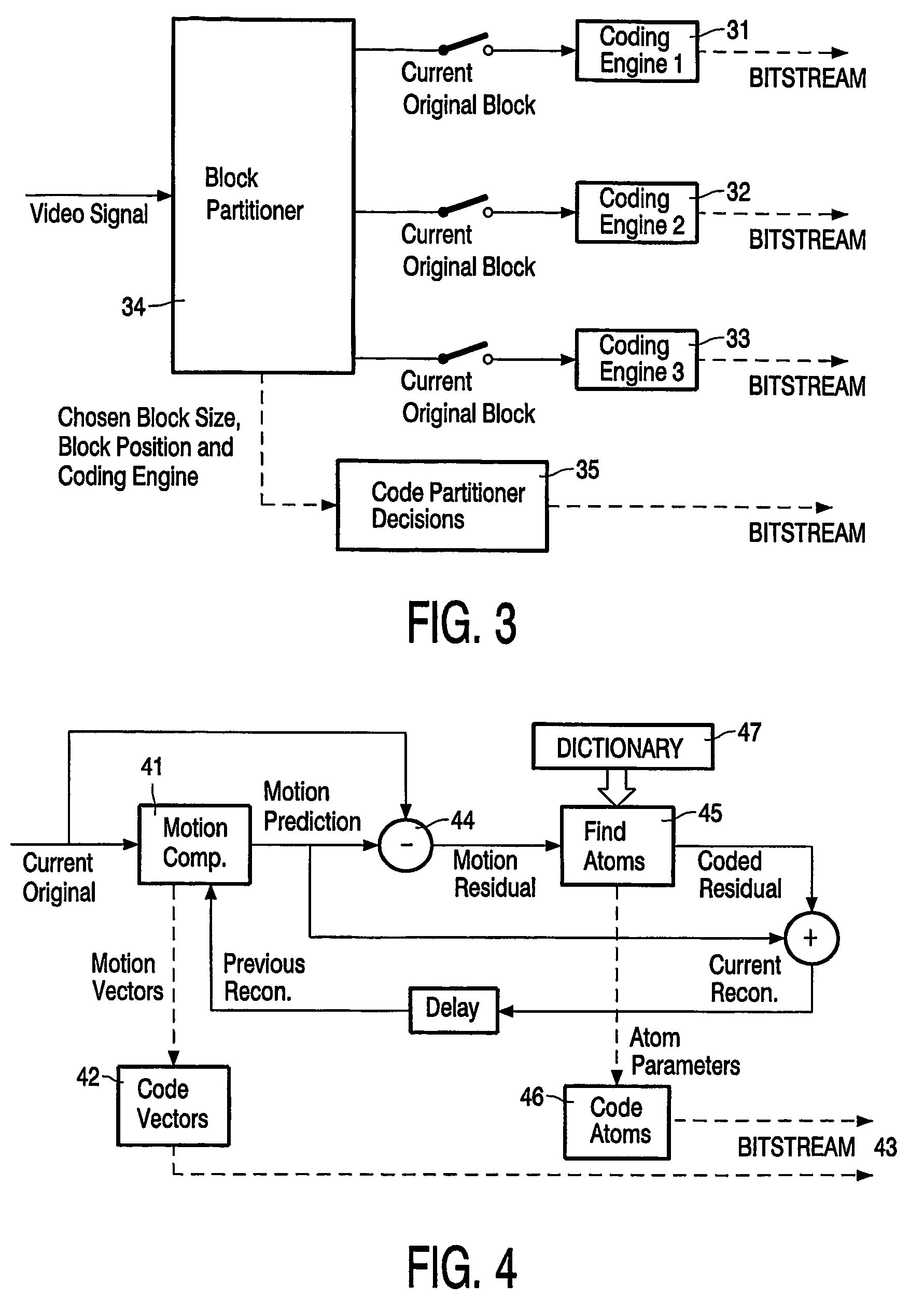Video encoding and decoding methods and corresponding devices
a video and encoding technology, applied in the field of video compression, can solve the problems of blocking artifacts, inability to deliver an artefact-free sequence, and visible prediction grids, and achieve the effect of enhancing dictionary diversity and better modeling the blocky structure of residual signals
- Summary
- Abstract
- Description
- Claims
- Application Information
AI Technical Summary
Benefits of technology
Problems solved by technology
Method used
Image
Examples
Embodiment Construction
[0030]A simplified block diagram of a video encoding device implementing a hybrid video coder using multiple coding engines is shown in FIG. 3. Several coding engines implement predetermined coding techniques, for instance a coding engine 31 can implement the INTRA-DCT coding method, a second one 32 the INTER-DCT coding method, and a third one 33 the matching pursuit algorithm. Each frame of the input video sequence is received (“video signal”) by a block partitioner device 34, which partitions the image into individual blocks of varying size, and decides which coding engine will process the current original block. The decisions representing the block position, its size and the selected coding engine is then inserted into the bitstream by a coding device 35. The current original signal block is then transferred to the selected coding engine (the engine 33 in the situation illustrated in FIG. 3).
[0031]A matching pursuit coding engine will be further illustrated as a simplified block ...
PUM
 Login to View More
Login to View More Abstract
Description
Claims
Application Information
 Login to View More
Login to View More - R&D
- Intellectual Property
- Life Sciences
- Materials
- Tech Scout
- Unparalleled Data Quality
- Higher Quality Content
- 60% Fewer Hallucinations
Browse by: Latest US Patents, China's latest patents, Technical Efficacy Thesaurus, Application Domain, Technology Topic, Popular Technical Reports.
© 2025 PatSnap. All rights reserved.Legal|Privacy policy|Modern Slavery Act Transparency Statement|Sitemap|About US| Contact US: help@patsnap.com



